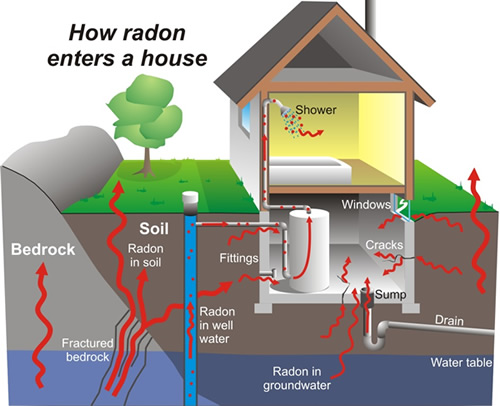-
Radon Gas? The air inside your home.
Radon is a naturally occurring radioactive gas that is inert, colorless, and odorless. Radon is naturally in the atmosphere outdoors, but it disperses rapidly and generally it is not a health issue. High radon gas exposure occurs inside homes, schools, and workplaces. Radon gas becomes trapped indoors after it enters buildings through cracks and other holes in the foundation. Breathing in high concentrations of radon gas over time increases your risk of lung cancer. Radon is the second leading cause of lung cancer in the United States. Nationally, the EPA estimates that about 21,000 people die each year from radon-related lung cancer. Only smoking causes more lung cancer deaths.

This map was created from the EPA's map of Radon Zones. It depicts the potential for radon in indoor air in each area. The EPA calls this the "predicted indoor radon screening potential".
